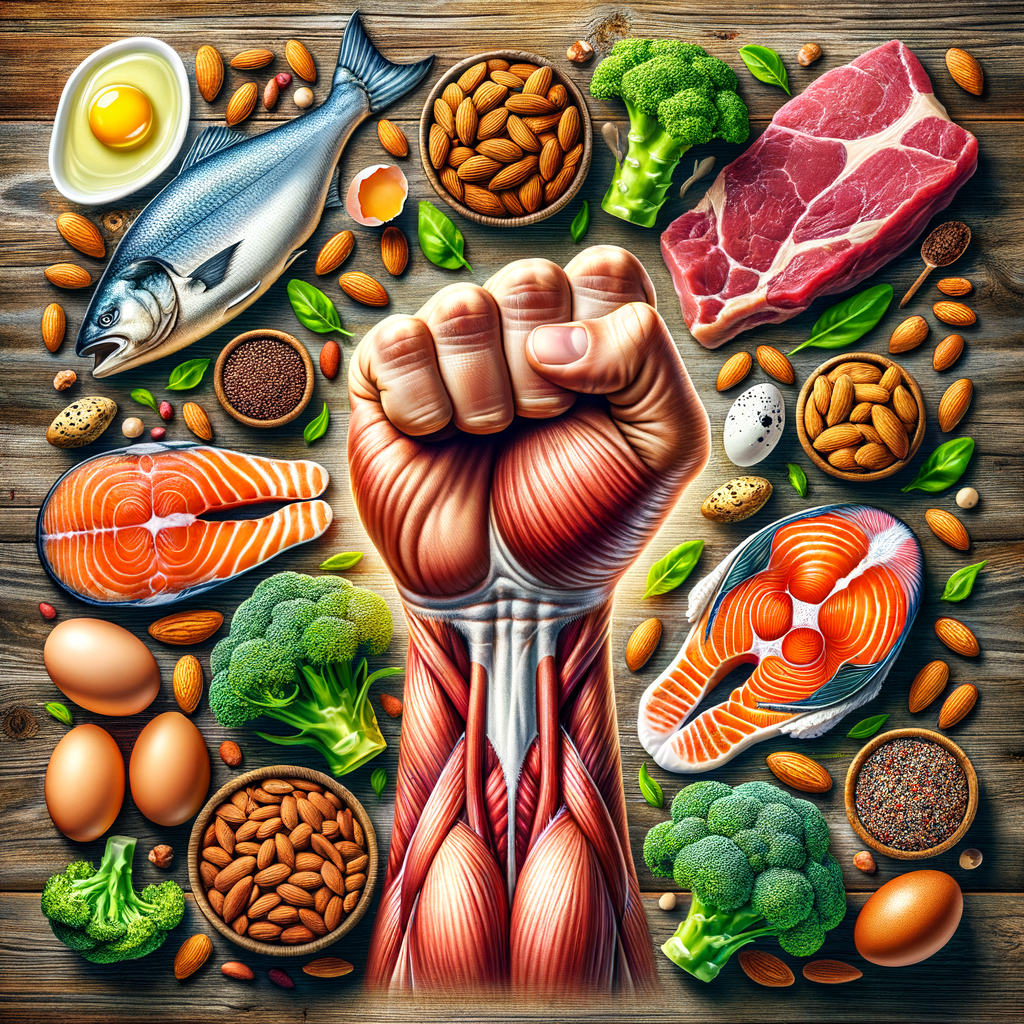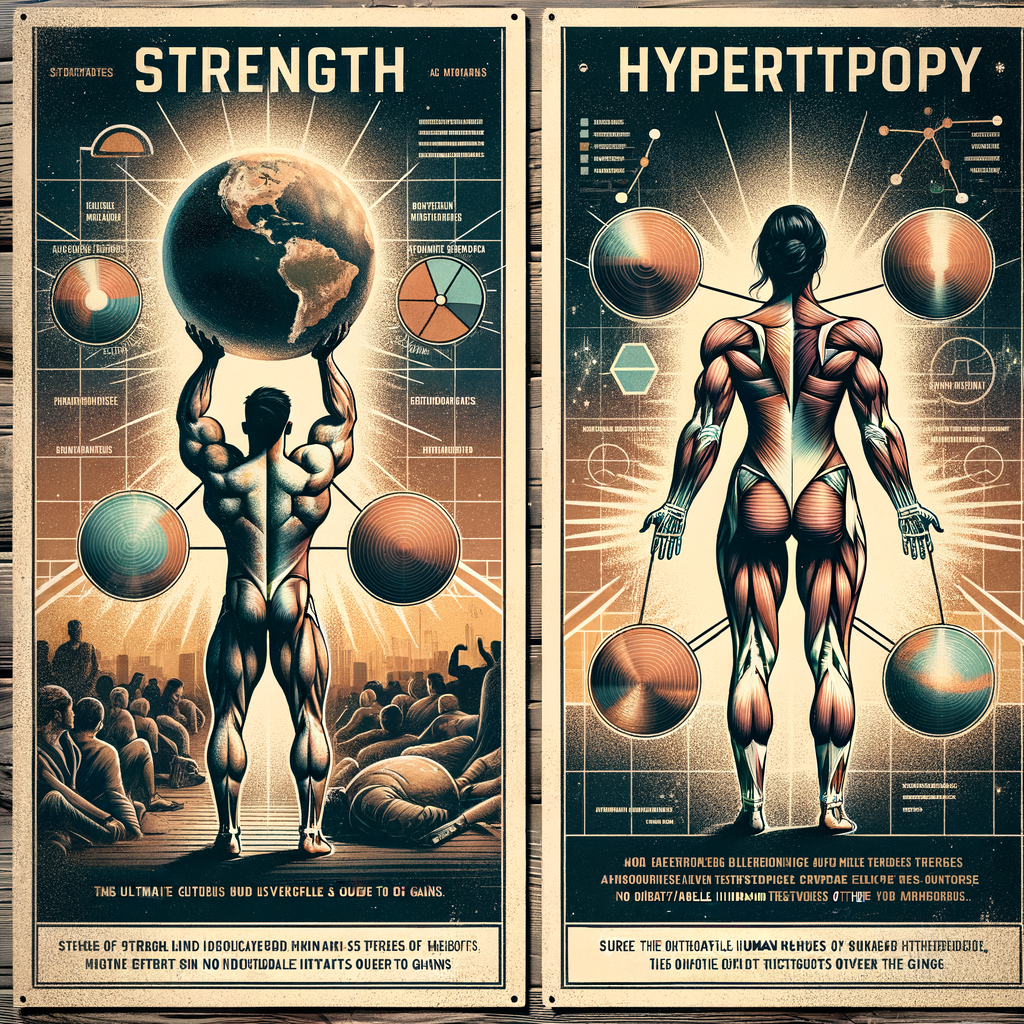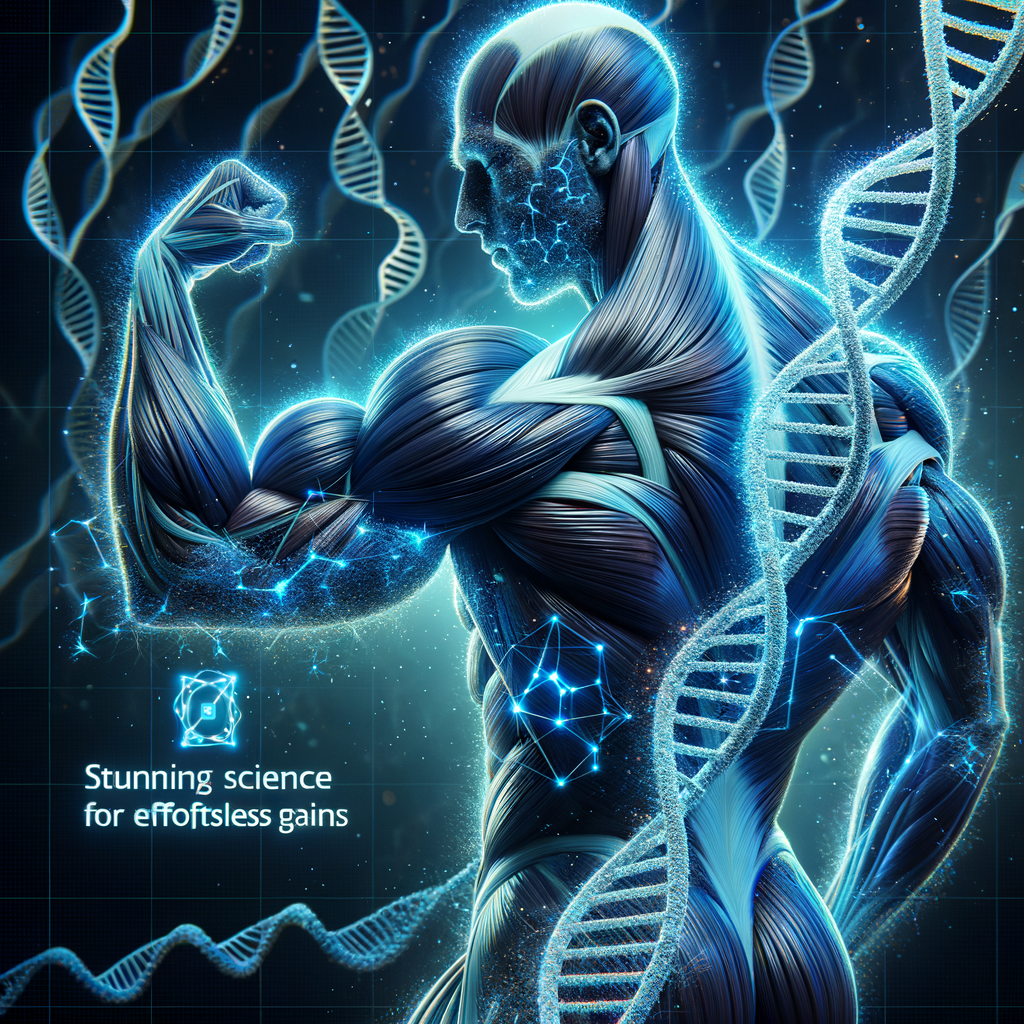Introduction
If you want to build muscle, protein must play a central role in your diet. Protein provides the amino acids your body uses to repair and grow muscle fibers after workouts. Moreover, protein helps you feel full, supports metabolism, and preserves lean mass while you lose fat. In short, protein matters whether you are new to training or you have years of experience.
This article highlights the best protein sources for muscle gain. You will learn how much protein to eat, when to eat it, and which foods give the most bang for your buck. Also, I include meal ideas, practical tips, and answers to common questions. Read on to create a clear, effective plan to reach your muscle-building goals.
Why Protein Matters for Muscle Gain
Muscle growth relies on a balance called muscle protein balance. After training, breakdown increases. However, with enough dietary protein, synthesis rises higher. Over time, a positive balance leads to muscle hypertrophy. Therefore, you need consistent protein intake across the day, not just after workouts.
Additionally, protein provides essential amino acids, including leucine. Leucine acts like a trigger for muscle protein synthesis. Foods rich in leucine and other essential amino acids usually produce better muscle gains. Consequently, the type and timing of protein matter as much as the total amount.
How Much Protein Do You Need?
Most research suggests 1.6 to 2.2 grams of protein per kilogram of body weight each day for muscle gain. For example, a 75 kg (165 lb) person should aim for about 120 to 165 grams of protein daily. Beginners and those in a calorie deficit may benefit from the higher end of this range.
Spread protein across 3–6 meals to maximize synthesis throughout the day. Each meal should include about 0.25 to 0.4 grams per kilogram. For a 75 kg person, that equals roughly 19 to 30 grams per meal. This practical approach helps sustain amino acid availability and supports recovery.
Protein Timing and Distribution
Post-workout protein has real value, but it does not trump total daily intake. Consuming protein within two hours after training can aid recovery. Still, consistent intake across the day matters more than one single meal.
Aim for protein every 3–4 hours, including before bed. Casein or a whole-food protein before sleep may boost overnight muscle protein synthesis. Also, pair protein with carbohydrates after intense sessions to restore glycogen and support performance.
Essential Amino Acids and Leucine
Not all proteins act the same. Complete proteins contain all nine essential amino acids. Animal proteins usually meet this standard. Some plant proteins lack one or more essential amino acids but combine well with others.
Leucine plays a key role. It activates pathways that start muscle protein synthesis. Most experts recommend 2.5 to 3 grams of leucine per meal to maximize synthesis. Foods like whey, beef, chicken, and soy provide strong leucine levels per serving.
Top Animal Protein Sources for Muscle Gain
Whey Protein
Whey protein offers a fast digesting, high-leucine option. It quickly raises blood amino acid levels, which fuels muscle protein synthesis. Many athletes use whey post-workout for this reason.
Whey comes as concentrate, isolate, and hydrolysate. Isolate contains more protein and less lactose. Hydrolysate digests faster but costs more. Also, whey is convenient and mixes easily into shakes.
Chicken Breast
Chicken breast remains a classic choice for muscle builders. It provides high protein per calorie and fits many meal plans. Additionally, chicken cooks quickly and adapts to many flavors.
A typical 100 g serving gives around 30 g of protein. Hence, you can meet daily targets with a few portions. Most importantly, lean chicken keeps calorie counts manageable while supporting gains.
Beef (Lean Cuts)
Beef supplies protein plus iron and vitamin B12. These nutrients help energy and recovery. Choose lean cuts like sirloin or flank to reduce saturated fat intake.
A 100 g serving of lean beef gives around 26–31 grams of protein. Grass-fed beef may contain more omega-3s, though differences remain modest. Still, beef adds variety and high-quality amino acids.
Eggs
Eggs provide a nearly perfect amino acid profile. The yolk contains vitamins and minerals that benefit overall health. Moreover, eggs digest well and keep costs low.
One large egg delivers about 6–7 grams of protein. For many, three to five eggs per meal helps reach a good protein dose. Also, cooking methods let you control added fats.
Fish (Salmon, Tuna, Cod)
Fish offers high-quality protein and healthy fats. Salmon supplies omega-3s that reduce inflammation and may support recovery. Tuna and cod provide leaner options with excellent protein density.
A 100 g serving of most fish gives 20–25 grams of protein. Fish cooks quickly and pairs well with many sides. Thus, it works for both convenience and nutrition.
Top Plant Protein Sources for Muscle Gain
Soy (Tofu, Tempeh, Edamame)
Soy stands out among plant proteins because it is complete. Tofu, tempeh, and edamame provide all essential amino acids. Tempeh also delivers probiotics and fiber.
A 100 g serving of tofu offers roughly 8–20 grams of protein depending on type. Tempeh often provides 18–20 grams. Thus, soy can serve as a primary protein source for vegetarians and vegans.
Legumes (Lentils, Chickpeas, Beans)
Legumes offer protein, fiber, and micronutrients. They digest slower than animal proteins, which helps with satiety. However, legumes often lack sufficient methionine; combining them with grains solves this.
For instance, 1 cup (cooked) of lentils gives about 18 grams of protein. Chickpeas and black beans provide 14–15 grams per cup. Use them in stews, salads, or as spreads.
Pea Protein
Pea protein powder has grown popular among athletes. It offers high protein content and good digestibility. While pea lacks a bit of methionine, it pairs well with rice protein.
Many blends use pea and rice to achieve a complete amino acid profile. Also, pea protein works well in shakes and cooking applications.
Quinoa and Whole Grains
Quinoa stands out as a complete plant protein. It contains all essential amino acids and offers complex carbs. Whole grains like brown rice and oats add protein and fiber too.
One cup of cooked quinoa gives about 8 grams of protein. Use it as a base for bowls or salads. Combining grains with legumes creates a powerful protein mix.
Nuts and Seeds
Nuts and seeds provide protein, healthy fats, and micronutrients. They also add texture and flavor to meals. However, their calorie density means you should measure portions.
Examples: 2 tablespoons of peanut butter deliver about 8 grams of protein. Chia seeds add 4 grams per ounce. Use nuts and seeds as snacks or toppings.
Comparison Table: Protein Per Typical Serving
| Food (100 g unless noted) | Approx. Protein (g) | Notes |
|—————————|———————:|——-|
| Whey protein powder (30 g) | 20–27 | Varies by product |
| Chicken breast (100 g) | 30 | Lean, versatile |
| Lean beef (100 g) | 26–31 | High B12, iron |
| Salmon (100 g) | 20–25 | Omega-3 rich |
| Tuna (100 g) | 23–30 | Very lean |
| Egg (1 large, 50 g) | 6–7 | Complete protein |
| Tofu (100 g) | 8–20 | Varies by firmness |
| Tempeh (100 g) | 18–20 | Fermented soy |
| Lentils (1 cup cooked) | 18 | High fiber |
| Chickpeas (1 cup cooked) | 14–15 | Versatile |
| Quinoa (1 cup cooked) | 8 | Complete plant protein |
| Peanut butter (2 tbsp) | 8 | Calorie dense |
| Pea protein powder (30 g) | 20–25 | Good vegan option |
Protein Supplements: When and Which to Pick
Whey Protein
Whey suits those who want quick digestion and high leucine content. Many people use it post-workout. Play with concentrates, isolates, or hydrolysates based on budget and lactose tolerance.
Use whey when you need a fast, convenient protein boost. Also, add it to oats, smoothies, or recipes. However, do not use supplements to replace whole foods entirely.
Casein Protein
Casein digests slowly and releases amino acids over several hours. Athletes often use casein before sleep. This approach can reduce overnight muscle breakdown.
Combine casein with a balanced diet to maximize benefits. You can also mix casein into nighttime smoothies.
Plant-Based Protein Powders
Plant protein powders now match many animal powders for effectiveness. Pea, rice, hemp, and soy powders all work well. Blend types to achieve a full amino acid profile.
Choose plant powders if you follow a vegan diet or if you tolerate dairy poorly. Check ingredient lists for added sugars and fillers.
Collagen and Other Proteins
Collagen lacks tryptophan and does not qualify as a complete protein. It may aid joint or skin health but will not maximize muscle building alone. Therefore, use collagen as a complement, not as a main source.
Similarly, egg-white and beef protein isolates offer alternatives for those with specific needs.
Combining and Complementing Proteins
Mixing proteins can improve amino acid profiles. For example, rice and pea protein together become more complete. Similarly, beans plus rice or tortillas create a complete plant protein meal.
Additionally, aim for variety across days. Different foods offer distinct micronutrients. For example, fish provides omega-3s, while beef supplies iron and B12. Varied intake supports muscle and overall health.
Meal Ideas and Sample Plan
Simple high-protein meals help you hit targets without stress. Below are practical meal ideas for different times of the day.
Breakfast ideas:
– Greek yogurt with berries, honey, and crushed almonds.
– Omelet with three eggs, spinach, and feta cheese.
– Oatmeal blended with whey or pea protein, banana, and peanut butter.
Lunch ideas:
– Grilled chicken salad with quinoa, mixed greens, and avocado.
– Tempeh bowl with brown rice, steamed broccoli, and tahini.
– Tuna wrap with whole-grain tortilla and plenty of veggies.
Dinner ideas:
– Salmon with sweet potato and asparagus.
– Lean beef stir-fry with mixed peppers and brown rice.
– Lentil curry with spinach and a side of naan or rice.
Snacks and mini-meals:
– Cottage cheese with pineapple or cucumber slices.
– Protein shake with banana and spinach.
– Hummus with carrot sticks and whole-grain crackers.
Sample day for a 75 kg person aiming for 150 g protein:
– Breakfast: 3 eggs (18 g) + Greek yogurt (15 g) = 33 g
– Snack: Protein shake (25 g) = 25 g
– Lunch: Chicken breast (40 g) + quinoa (6 g) = 46 g
– Snack: Cottage cheese (15 g) = 15 g
– Dinner: Salmon (25 g) = 25 g
Total = 144 g (adjust portions slightly to hit 150 g)
Practical Tips to Increase Protein Intake
Plan meals around a lean protein source first. After that, add carbs and vegetables. This strategy keeps protein consistent across meals.
Use simple swaps. For example, choose Greek yogurt over regular yogurt. Or pick chicken or tofu instead of a low-protein side. Also, keep portable high-protein snacks on hand when you travel.
Measure portions until you become familiar with sizes. Then use visual cues like a palm-sized serving of meat per meal. Finally, track intake occasionally to ensure you meet daily targets.
Common Mistakes to Avoid
Relying only on supplements. Whole foods provide more than protein. Nutrients like iron, zinc, and B vitamins matter for performance and health.
Ignoring meal distribution. Many people cram most protein into one meal. Instead, distribute protein evenly across the day. This approach maximizes synthesis and recovery.
Overemphasizing protein at the expense of calories or carbohydrates. Muscles need energy to grow. Balance protein with enough calories and carbs to fuel workouts.
Budget-Friendly Protein Strategies
You do not need expensive foods to get quality protein. Eggs, canned tuna, dried lentils, and Greek yogurt offer great value. Buy in bulk when possible and cook in batches.
Also, consider cost per gram of protein. Often, dried beans and lentils beat pricier packaged proteins. Finally, shop sales and frozen options to keep costs down.
How to Combine Protein With Training
Progressive overload in training pairs directly with sufficient protein intake. Lift heavy and increase volume over time. Then, ensure recovery with rest and protein-rich meals.
Track performance metrics and body composition. If progress stalls, adjust calories, protein, or training variables. In most cases, a slight calorie increase plus proper protein fixes plateaus.
Special Considerations: Age, Gender, and Vegetarians
Older adults require more protein to combat anabolic resistance. Aim for the higher end of the protein range. Also, include leucine-rich meals and resistance training.
Women, especially during pregnancy or breastfeeding, need more protein too. Adjust targets based on body weight and activity level. Vegetarians and vegans must plan carefully. Combine various plant proteins across the day to meet essential amino acid needs.
Sustainable and Ethical Choices
If sustainability matters to you, choose proteins with lower environmental impact. Plant proteins like lentils, peas, and tofu typically use fewer resources than beef. However, fish and poultry often sit between plant and beef in impact.
Additionally, choose sustainably sourced fish and consider pasture-raised or humanely raised animal products when possible. These choices balance ethics, health, and muscle goals.
Quick Recipes to Try
High-protein overnight oats:
– 1/2 cup oats, 1 scoop protein powder, 1 cup milk or plant milk, 1 tbsp chia seeds.
– Mix and refrigerate overnight. Top with fruit and nuts.
Simple chicken stir-fry:
– 150 g chicken breast, mixed vegetables, 1 tbsp soy sauce, 1 tsp sesame oil.
– Stir-fry chicken until cooked, add veggies, and finish with sauce.
Tempeh and quinoa bowl:
– 150 g tempeh, 1 cup cooked quinoa, roasted vegetables, tahini dressing.
– Cube and pan-fry tempeh before combining.
These recipes keep prep time low and protein high.
Monitoring Progress and Adjustments
Use measures beyond scale weight. Track strength, measurements, and how clothes fit. Taking progress photos every few weeks helps too. If you gain fat faster than muscle, slightly reduce calories while keeping protein high.
Also, don’t fear short-term fluctuations in weight. Water, glycogen, and inflammation affect scale numbers. Focus on long-term trends and consistent habits.
Supplements That May Help Recovery
Creatine monohydrate remains one of the most researched supplements for muscle and strength. It complements protein and resistance training. A daily dose of 3–5 grams enhances strength and may increase muscle mass.
Other supplements include omega-3s for inflammation and vitamin D if you are deficient. However, prioritize whole foods and protein before adding too many products.
When to See a Professional
If you have kidney disease, consult a doctor before boosting protein intake. Also, seek a registered dietitian if you struggle to meet protein targets or have complex dietary needs. Professionals can personalize plans and monitor health markers.
Closing Thoughts
Protein for muscle gain demands smart planning and consistency. Choose high-quality sources, spread intake across the day, and pair food with effective training. Also, adapt your plan based on progress and lifestyle.
You do not need perfection. Small, sustainable changes yield big results over months. Focus on good habits, variety, and enjoyable meals to keep progress steady.
Frequently Asked Questions (FAQs)
1. How quickly will I see muscle gains after increasing protein?
Muscle gains depend on training, calories, rest, and protein. Many people see strength improvements within weeks. Visible muscle changes often require several months of consistent effort.
2. Can I build muscle on a plant-based diet?
Yes. You can gain muscle with plant proteins, but you must plan to meet total protein and essential amino acids. Combine sources like legumes, grains, soy, and protein powders.
3. Is more protein always better for muscle gain?
No. After a certain point, extra protein provides minimal gains and may add excess calories. Aim for 1.6–2.2 g/kg per day for most people.
4. Should I take protein before or after workouts?
Total daily protein matters most. Still, consuming protein within two hours post-workout helps recovery. Also, having some protein before and after training can help performance.
5. Are fast-digesting proteins superior to slow ones?
Each type has merits. Fast proteins like whey spike amino acids quickly. Slow proteins like casein provide sustained release. Use both based on timing and personal preference.
6. Can too much protein harm my kidneys?
Healthy people with normal kidney function tolerate high protein diets well. If you have kidney disease, consult a doctor before increasing protein.
7. How do I calculate protein needs for my body?
Multiply your body weight in kilograms by 1.6–2.2. For pounds, divide by 2.2 first. Adjust based on training intensity and goals.
8. Does cooking reduce protein quality?
Cooking can change protein structure but does not destroy amino acids significantly. Proper cooking improves digestibility and food safety.
9. Are protein bars as good as whole foods?
Some protein bars provide quality protein, while others add sugars and fats. Read labels and pick bars with minimal added sugars and decent protein per serving.
10. What if I can’t eat much food in one sitting?
Use protein-dense foods and shakes. Smoothies pack protein and calories without much volume. Small, frequent meals also help spread intake.
References
– Phillips SM. Dietary protein for athletes: From requirements to optimum adaptation. Journal of Sports Sciences. 2014. https://www.ncbi.nlm.nih.gov/pmc/articles/PMC3905294/
– (Incomplete: max_output_tokens)



